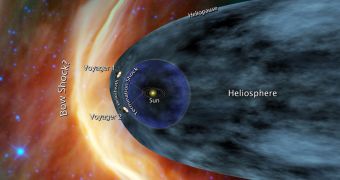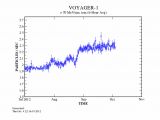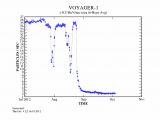Voyager is now the most distant man-made object from Earth. It's now been hurtling through space for 35 years and it hasn't even got out of the Solar System. But it may be very close, while there's nothing official and conclusive yet, tell-tale signs point that the spacecraft may have left the Solar System as it's currently defined and is now in interstellar space.
At the very least, it's very close to getting out. Hints of the spacecraft hitting the edge have been coming in for two years now.
Its internal instruments have been showing a decrease in particles typically found in the Solar System and an increase in high-energy particles thought to be found outside of it.
There's no conclusive evidence yet, but the data that is coming out is starting to be hard to ignore.
If the data is correct, Voyager 1, now some 18.2 billion km, 11.3 billion miles away from the sun, may have actually left the Solar System, the Heliopause.
Scientists are only working with theories of what the edge of the Solar System would be like. It's hard to find something if you're not sure how it looks like.
However, they're looking for three key characteristics which would indicate that Voyager 1 is in interstellar space.
One, would be a big drop in detection of charged particles from the sun, since they'd be pushed back by the "pressure" of interstellar particles.
Another would be an increase in high-energy particles which are normally pushed back by the sun's influence.
For scientists to be convinced, they would also need to see a change in the direction of the magnetic field.
Two of those signs are already visible. A sharp drop in particles originating in the Solar System was recorded by onboard instruments in late August.
At the same time, instruments showed a big increase in high-energy cosmic rays, originating from Supernova explosions and similar phenomenon.
That's at the same time as NASA scientists were predicting Voyager would take another year to leave the Solar System. NASA is now crunching data and waiting to see whether there's a change in the magnetic field, which would make it clear that Voyager 1 got through.

 14 DAY TRIAL //
14 DAY TRIAL // 

